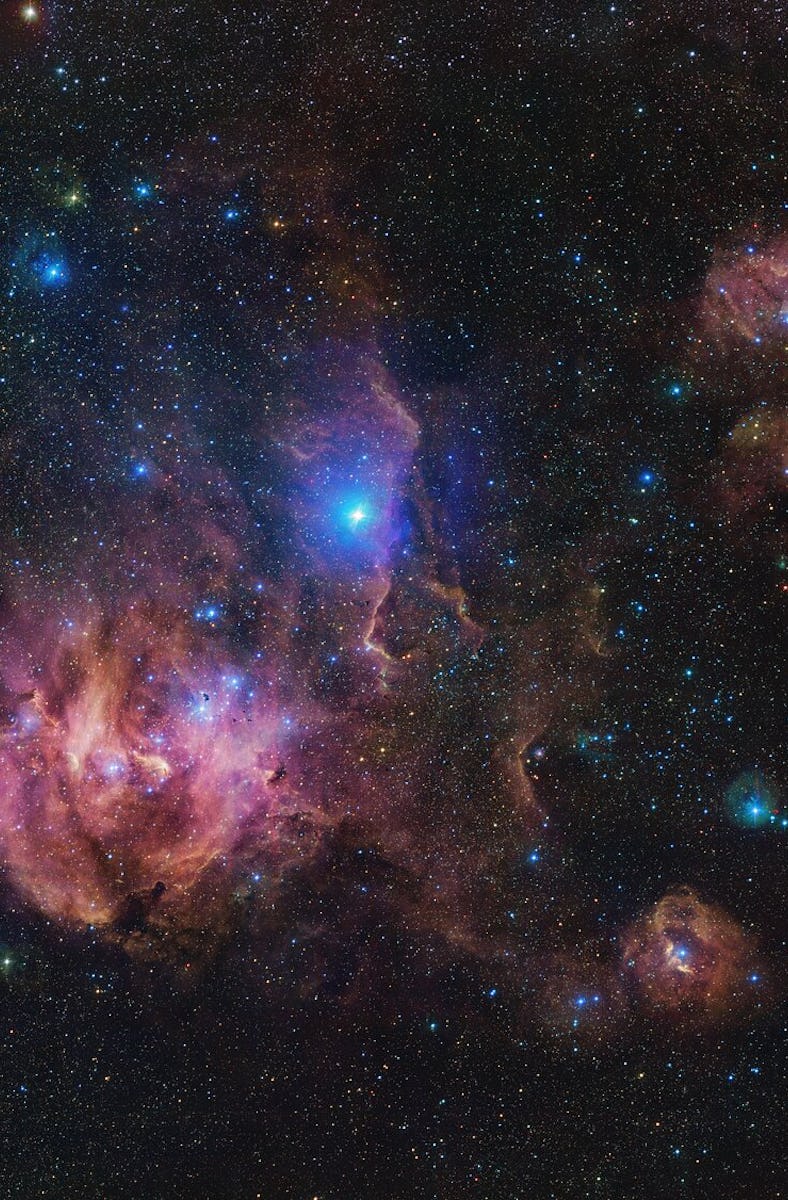This 1.5-Billion-Pixel Image Captures the Running Chicken Nebula in an Angle Most Fowl
To boldly go where no chicken has gone before.

A favorite pastime for us Earth-bound cloud gazers is to dream up animals that resemble a nearby cumulus cloud. Well, astronomers are no different when it comes to cosmic “clouds” of gas, dust, and newborn stars.
Take, for instance, the Running Chicken Nebula. While observers don’t quite agree on which end is its head and which is the tailfeathers, one thing is for certain — this particular celestial display is definitely a nebula most fowl, and a new image from the European Southern Observatory’s Very Large Survey Telescope, or VST, captures it in all its avian-like glory.
Meet the Running Chicken Nebula
If you could see the Running Chicken Nebula with the unaided eye, it would be spread across a swath of night sky the size of 25 full Moons. But because this glowing cloud lies 6,500 light years away, we need telescopes like VST, which specializes in wide, all-encompassing views of the cosmos (which help the Very Large Telescope, or VLT, find targets to zoom in on) in order to see it.
This image is actually a stitched-together mosaic of hundreds of individual images, depicting an area of sky about 25 times the area of the full Moon.
This image is actually a mosaic of hundreds of individual images, carefully merged together into this 1.5 billion-pixel panorama. You can zoom in and explore all the dazzling details on the European Southern Obseratory’s website.
Deep in the billowing clouds that make up the Running Chicken, dense patches of gas are collapsing under their own mass, kickstarting nuclear fusion at their cores and flaring new stars to life. Those young stars blast everything around them with powerful ultraviolet radiation, which heats clouds of hydrogen to the bright pink glow that suffuses most of the image. Newborn stars are especially active in the brightest area of the nebula — that feathery pastel wisps of gas and dust that look like either the chicken’s head or its tailfeathers (depending on your point of view).
Stellar winds laden with ultraviolet radiation and charged particles bombard the surrounding gas, carving out cavities and sculpting pillars. Zoom in on the VST image and scroll around, and you’ll see several small, dark chunks of gas and dust. These patches, called Bok Globules, are dense enough to stand up to the young stars’ ultraviolet blasts while the lighter material around them gets blown away.
The Running Chicken Nebula is about 720 light years wide, and the European Southern Observatory states that “it would take an average chicken almost 21 billion years to run across it.” Astronomers still don’t agree on what would motivate the chicken, but a leading theory suggests getting to the other side.